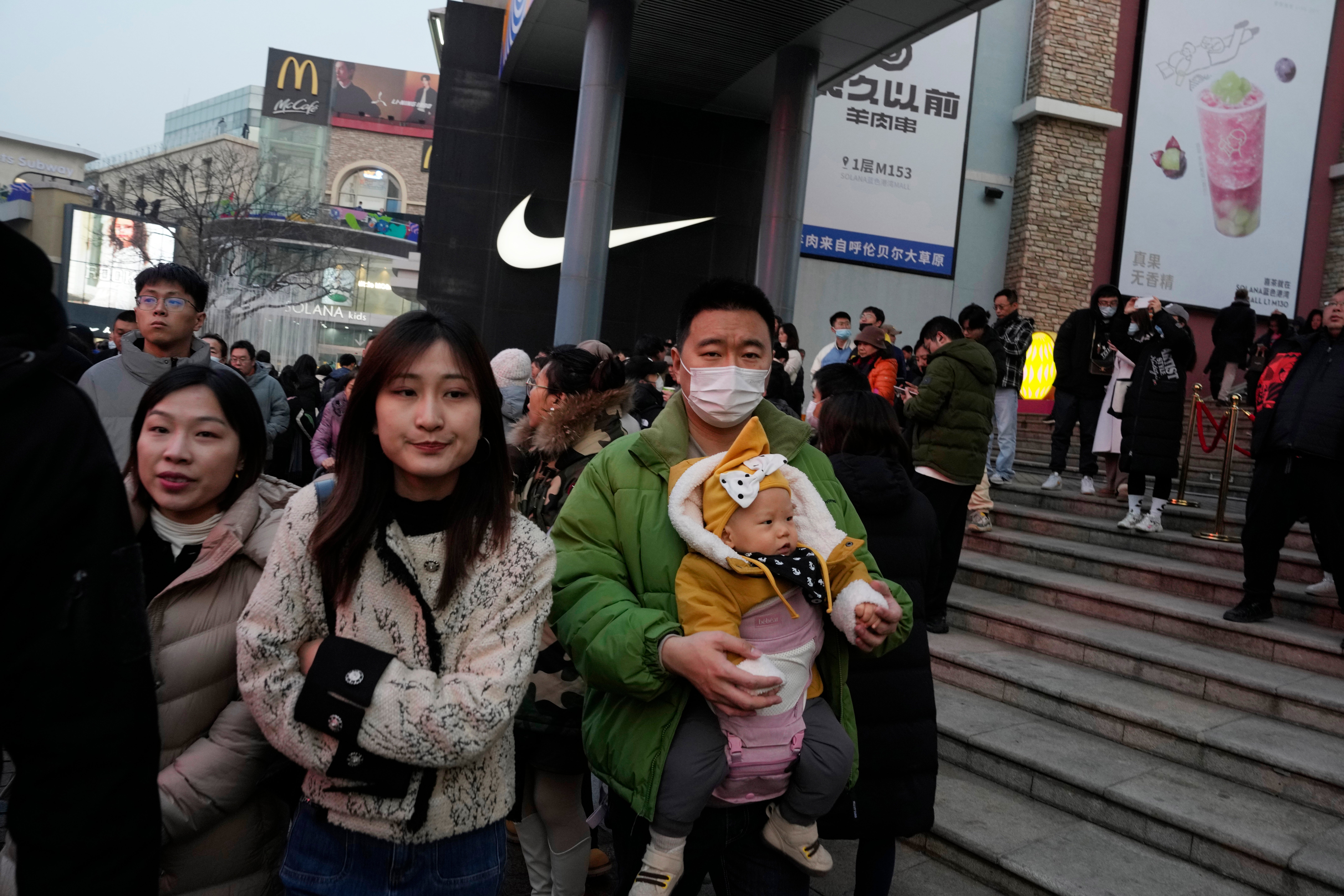China’s population falls by more than 2 million as birth rate hits new low
Decline is more than twice as fast as last year’s, and comes despite efforts by the Xi administration to boost the fertility rate

Your support helps us to tell the story
From reproductive rights to climate change to Big Tech, The Independent is on the ground when the story is developing. Whether it's investigating the financials of Elon Musk's pro-Trump PAC or producing our latest documentary, 'The A Word', which shines a light on the American women fighting for reproductive rights, we know how important it is to parse out the facts from the messaging.
At such a critical moment in US history, we need reporters on the ground. Your donation allows us to keep sending journalists to speak to both sides of the story.
The Independent is trusted by Americans across the entire political spectrum. And unlike many other quality news outlets, we choose not to lock Americans out of our reporting and analysis with paywalls. We believe quality journalism should be available to everyone, paid for by those who can afford it.
Your support makes all the difference.China’s population has undergone a second consecutive annual decline, falling by more than 2 million in 2023, according to government data released on Wednesday.
The National Bureau of Statistics of China reported that the total population was 1.409 billion by the end of 2023, a significant decrease of 2.08 million against 2022.
This decline is twice as large as the previous year’s fall of some 850,000, itself the first population drop in 60 years in China.
On Wednesday, Beijing announced that the birth rate had decreased to 6.39 per 1,000 people – aligning with rates in other advanced east Asian nations such as Japan and South Korea – despite concerted efforts by the Xi administration to encourage families to have more children.
China also saw a notable spike in its death rate in 2023, up 6.6 per cent to 11.1 million, the highest death rate in the 50 years since the era of Mao Zedong’s Cultural Revolution.
Experts have attributed this spike in part to the abrupt lifting of China’s Covid-19 restrictions in late 2022.
The number of births decreased for the seventh consecutive year, with about 9 million babies born in 2023, half the number in 2016.
When China introduced an amended gender discrimination law in 2022, the government instructed women to adhere to “family values” and to be “good wives and mothers” – highlighting the increasing pressure on women to embrace domestic roles.
Chinese president Xi Jinping recently urged government officials to promote a “marriage and childbearing culture” and to try to influence young people’s thinking on “love and marriage, fertility and family”.
But young Chinese people have not been receptive to the government’s efforts, in part because they do not address the main concerns preventing people from having children.
“Women still don’t feel sure enough to have children in our country,” Rashelle Chen, 33, a social media professional from the southern province of Guangdong told The New York Times. She has been married for five years. “It seems that the government’s birth policy is only aimed at making babies but doesn’t protect the person who gives birth. It does not protect the rights and interests of women.”
China has experienced a declining birth rate for decades, beginning with the controversial one-child policy in the 1980s that was designed to address overpopulation.
The government lifted the policy in 2015 in an attempt to address population decline, and has since introduced various incentives including subsidies and cash payments to encourage people to have children.
In 2021, the government further relaxed restrictions, allowing couples to have up to three children. But it seems to have come too late, with the population starting to fall faster than was expected. Experts warn that this could have serious repercussions for the economy, curbing growth and shrinking the workforce while reducing demand for housing.
In April last year, in an attempt to slow its demographic decline, Chinese policymakers were contemplating opening up IVF access to single women and providing them with child subsidies that were previously only available to married couples.
Last year, a Chinese state broadcaster slammed international media reports for “bad-mouthing” the country after UN data suggested India was set to overtake the Asian giant as the world’s most populous nation. The UN now estimates that India has done so.
A day before the latest data was released, the state-owned Global Times reported that Chinese demographers had suggested reshaping fertility support policies to counteract population decline.
The report said that experts had proposed a systematic policy overhaul in an attempt to address factors contributing to the declining birth rate. These include subsidies for newborn care, reducing living expenses, alleviating educational anxiety, and promoting female employment.
China’s diminishing workforce also poses a potential threat to the global economy, as the country’s once massive working-age population dwindles. The shortage of factory workers, attributed to a better-educated workforce and a declining youth population, may lead to increased costs for consumers worldwide, especially in countries that are heavily reliant on imported Chinese goods.
As China’s working-age population falls over time, the government may face further challenges in supporting a large and ageing population with longer life expectancy. And a report from the Chinese Academy of Social Sciences in 2019 forecast that the country’s primary pension fund could be depleted by 2035, citing the impact of a shrinking workforce as one contributing factor.
Join our commenting forum
Join thought-provoking conversations, follow other Independent readers and see their replies
Comments